General TipsFine jewelry is a precious possession that is designed and crafted to last a lifetime. However, proper care is required to assure the lasting qualities of your jewelry. Jewelers of America (JA) is pleased to offer the following simple guidelines and tips for the care and cleaning of your fine jewelry.
- Store your jewelry in a clean, dry place.
- Keep your jewelry in a fabric-lined jewelry case, or in a box with compartments and dividers. If you prefer to use ordinary boxes, wrap each piece individually in soft tissue paper.
- Don't jumble your jewelry pieces in a drawer or jewelry case. Pieces can scratch each other.
- Be careful when removing your jewelry to wash your hands. Do not leave your jewelry on the rim of a sink where it can easily slip down the drain.
- See your jeweler at least once a year to have your jewelry checked for loose prongs, worn mountings, and general wear and tear. Visit your jeweler every six months to have your jewelry professionally cleaned.
- There are many types of small machines on the market that will clean jewelry in a matter of minutes using high-frequency sound. These machines are called "ultrasonic cleaners" and are available in many different models and prices. They can be a convenient way to quickly clean your jewelry at home. However, ultrasonic cleaners can damage some jewelry. Your local jeweler can tell you if an ultrasonic cleaning machine is right for your jewelry wardrobe and, if it is, recommend an appropriate model.

Diamond 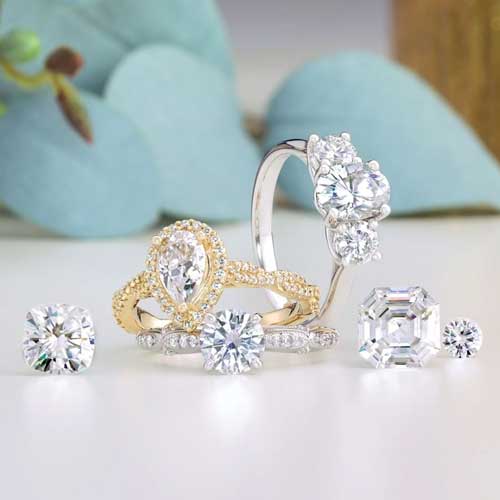
Diamond jewelry is very popular. Some pieces, such as diamond engagement and wedding rings, are often worn 24 hours a day. Even though you may wear your diamond jewelry around the clock, you should give thought to its care. Diamonds are durable, but they still require proper maintenance. Diamonds can get smudged, soiled and dusty. Lotions, powders, soaps, even natural skin oils, put a film on diamonds and cut down their brilliance. Clean diamonds "glow" because the maximum amount of light can enter the stone and return in a fiery brilliance. It takes just a little care to keep them that way.
- Do not wear diamond jewelry, especially rings, when doing rough work. Even though diamond is one of the hardest materials in nature, it can still be chipped by a sharp, sudden blow.
- Chlorine can damage and discolor the mounting on your diamond jewelry. Keep your diamond away from chlorine bleach or other household chemicals. You should also remove your diamond jewelry before entering a chlorinated pool or hot tub.
- Clean your diamonds regularly using a commercial jewelry cleaner, a mix of ammonia and water, or a mild detergent. Dip the jewelry into the solution and use a soft brush to dislodge dust or dirt from under the setting.
- Avoid touching your clean diamonds with your fingers. Handle clean jewelry by its edges.
Colored GemstonesThere are many different types of colored gemstones, some of which require specific care and cleaning procedures. It would be impossible to enumerate all of them in this brochure. However, there are some general care and cleaning rules which apply to all colored gemstone jewelry.
- Many natural gemstones are treated or enhanced from the time they are extracted from the earth by one or more traditionally accepted jewelry industry practices. These treatments and enhancements can affect how you should clean and care for your colored gemstone jewelry. Consult your jeweler for more information on caring for treated or enhanced gemstones.
- After wearing, wipe your precious gemstone jewelry thoroughly with a clean, soft, slightly damp cloth. This will enhance the gemstone's luster and ensure that your jewelry is clean before storage.
- Store gemstone pieces individually in soft pouches. You should be able to obtain these from your jeweler.
- Do not expose your precious gemstone pieces to salt water or harsh chemicals, such as chlorine or detergents. These chemicals may slowly erode the finish and polish of gemstones.
- Hair spray, perfume and perspiration may cause jewelry to become dull. Apply all cosmetics, perfumes and colognes before putting on colored gemstone jewelry. Make sure to wipe your gemstones after wear to remove any chemicals, oils or perspiration.
- Do not subject gemstone jewelry to sudden temperature changes.
- If you have an active lifestyle take extra precautions with some types of gemstone jewelry. Emeralds, for example, are brittle and should not be worn when doing household chores or any other activity where the stone could be hit or damaged.
- Be extra careful with ultrasonic cleaners. Some gemstones are fragile and can be damaged by ultrasonic cleaners. Consult your jeweler for the best cleaning procedure for your particular gemstone jewelry. Your jeweler is also a good source for any information on colored gemstones.
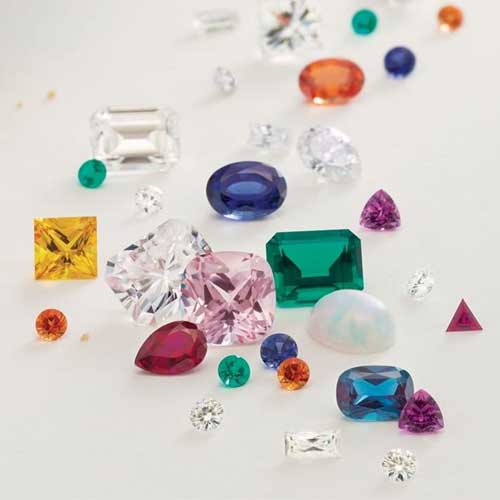
Karat Gold Jewelry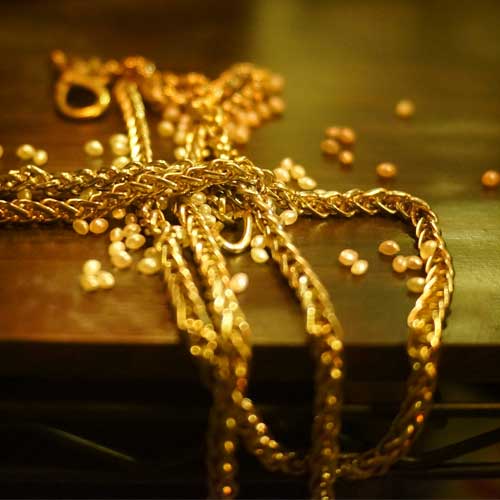
Karat gold jewelry pieces make up the majority of many fine jewelry collections. Gold comes in many different styles and colors, but the care and cleaning procedure remains the same.
- Remove all gold jewelry before showering or cleaning. Soap can cause a film to form on karat gold jewelry, making it appear dull and dingy. By preventing the formation of this film, you immediately reduce the occasions your pieces will need to be cleaned.
- To clean your jewelry at home, you'll find many commercial cleaners available. In addition, you will find a soft chamois cloth an effective and inexpensive way to keep your pieces lustrous and shining. Ask your jeweler to recommend both of these items for you.
- For certain gold jewelry, especially pieces that do not contain colored gemstones, an ultrasonic cleaning machine may be appropriate. Once again, ask your jeweler to advise you.
- Be careful of chlorine. Chlorine, especially at high temperatures, can permanently damage or discolor your gold jewelry. Do not wear gold jewelry while using chlorine bleach or while in a pool or hot tub.
- You can remove tarnish with a jewelry cleaner, or by using soap and water mixed with a few drops of ammonia. Carefully brush with a soft bristle brush. An old toothbrush can also be used. After the brushing, simply rinse with lukewarm water and allow to dry. If there is a heavy tarnish on your jewelry, consult your jeweler for the best cleaning procedure. You should also talk to your jeweler before attempting to clean any karat gold jewelry set with colored gemstones because some stones require special cleaning procedures.
- Grease can be removed from karat gold jewelry by dipping the jewelry into plain rubbing alcohol. Again, check with your jeweler about colored gemstone pieces.
PlatinumPlatinum is one of the rarest and most durable precious metals. It is resistant to tarnishing and discoloration due to chlorine and other chemicals. These factors, along with its strength and white luster, have made platinum an increasingly popular choice for jewelry, either on its own or as the setting for diamonds and other precious gemstones. However, despite its durability, platinum jewelry needs to be properly cared for.
- Platinum jewelry can be cleaned the same way you can other fine jewelry. Your jeweler can recommend a prepackaged jewelry cleaner that works with platinum, or ask your jeweler to professionally clean your platinum pieces. A professional cleaning every six months will keep your platinum jewelry in great shape.
- Store your platinum jewelry separately and with care, not allowing pieces to touch each other because even platinum can be scratched.
- Signs of wear such as scratches can eventually appear on platinum. However, due to the metal's durability there is usually little metal loss from the scratch. If visible scratches do appear, your jeweler should be able to repolish the piece.
- If your platinum is set with diamonds or other precious stones, be especially careful as these materials can be more susceptible to damage. Some fine jewelry pieces combine platinum with karat gold jewelry. Care for these pieces as you would your gold jewelry or consult your jeweler.

Sterling Silver Jewelry
Sterling silver, like other precious metals, can oxidize with time. But properly maintained silver jewelry improves with age and develops a lush patina. Treat your silver well, care for it properly and it will reward you with a long life and a lustrous look.
- Clean your silver jewelry with a mild soap and water solution, allowing the water to bead up, and then patting dry with a soft cloth. For more stubborn dirt, use a jewelry cleaner designed for silver use. Ask your jeweler to recommend an appropriate brand.
- Store your silver in a cool, dry place, preferably in a tarnish-preventive bag or wrapped in a soft piece of felt or cloth. Store pieces individually so that they don't knock together and scratch.
- Do not rub silver with anything other than a polishing cloth or a fine piece of felt. Your jeweler should be able to provide these. Tissue paper or paper towels can cause scratches because of the fibers in these products.
- Make sure your silver is not exposed to air and light during storage _ this can cause silver to tarnish. And don't wear sterling silver in chlorinated water or when working with household chemicals.
Cultured PearlsCultured pearls are precious jewels and should be treated as such. They're also the products of living creatures. Cultured pearls are formed when an irritant is introduced into a mollusk. The mollusk secretes a substance called nacre which covers the irritant and produces the pearl. Nacre gives pearls the rainbow of colors and luster that makes these gemstones so treasured, but its delicate nature also makes pearls particularly susceptible to damage. For this reason you should be extra careful with your cultured pearl jewelry..
- Apply cosmetics, hair sprays and perfume before putting on any pearl jewelry. When you remove the jewelry, wipe it carefully with a soft cloth to remove any traces of these substances.
- You can also wash your pearl jewelry with mild soap and water. Do not clean cultured pearls with any chemicals, abrasives or solvents. These substances can damage your pearls.
- Do not toss your cultured pearl jewelry carelessly into a purse, bag or jewel box. A pearl's surface is soft and can be scratched by hard metal edges or by the harder gemstones of other jewelry pieces.
- Place cultured pearl jewelry in a chamois bag or wrap them in tissue when putting them away.
- Cosmetics, perspiration, oils and ordinary wear weaken and stretch the threads on which the pearls are strung. Bring your pearls back to your jeweler for restringing once a year. Make certain the pearls are strung with a knot between each pearl. This will prevent loss of pearls if the string should break.
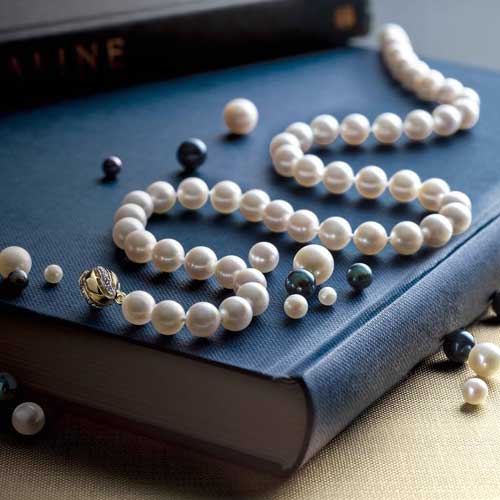
Watches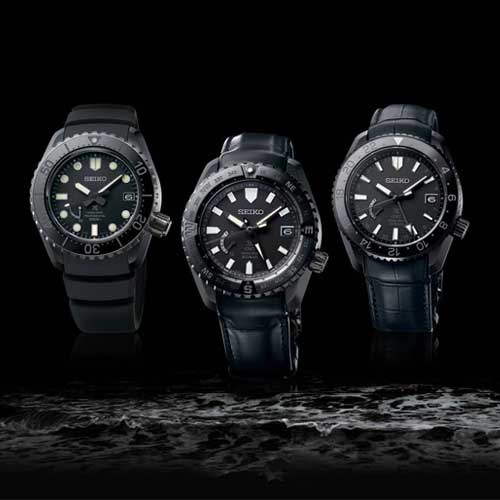
Watches need the same amount of attention as fine jewelry. Fine watches are sophisticated and precise pieces of equipment; the price often reflects the skilled workmanship that goes into a fine timepiece. In order to get the most satisfaction out of your watch, you should follow some simple care and cleaning guidelines.
- No matter how handy you are, don't attempt "do-it-yourself" watch repairs. Only an expert jeweler/watchmaker should be trusted to put your watch back into working condition.
- Give your watch a quick check on a regular basis, making sure that the strap or bracelet is securely attached to the watch face.
- A mechanical watch should be checked regularly by your jeweler/watchmaker or an authorized dealer and serviced according to the manufacturer's guidelines.
- Wind your watch in a clockwise direction, preferably about the same time each day. Remove the watch from your wrist when winding so as not to place undue pressure on the stem.
- Replace broken or scratched crystals immediately. Even a hairline crack can let dust and moisture into the time-keeping mechanism, threatening its accuracy.
- Unless the degree of water-resistance is clearly specified when you purchase your watch, do not wear it into the shower or pool, or on a moist wrist.
- Have your jeweler/watchmaker or an authorized watch dealer replace the battery in a quartz watch before it runs out. Dead batteries left in the watch can leak or corrode, ruining the timepiece. Do not attempt to change the battery in a watch yourself. If your watch is water-resistant, a water-resistance test should be performed after the battery has been replaced to ensure that water will not leak into and damage the watch.
- Batteries run for about two to three years. Those in some less expensive, multi-function digital watches have shorter lives, as little as six months. Using extra features such as a calculator or game can shorten battery life.
- Oils from your skin can build up on a watch. If your watch is water-resistant, you can give it a quick cleaning with a mixture of warm water and either a mild soap or a dish detergent. Dry the watch with a soft cloth after cleaning. If your watch has a strap made out of leather or another material, you should clean only the watch face and not the strap.
- If your watch is not water-resistant, or you're not sure, do not immerse it in water. Clean the piece with a slightly damp cloth and then dry.
Where to Go for Care and CleaningTo make sure that your fine jewelry and watches are properly cared for, take them to a professional jeweler, someone you can trust. Choose a retailer who has been serving the community for a number of years and has an established reputation.
Ask if the jeweler is a member of Jewelers of America, the national association for retail jewelers. Or look for the "J" mark on the door. JA jewelers are knowledgeable and they offer a wide range of services to care for your fine jewelry. Your JA jeweler will not only help you properly maintain your jewelry but will also answer your care and cleaning questions and help you with your purchases, repairs and custom design.
Source: JA